ARTICLE AD BOX
Explore Android's ongoing improvement pinch this ocular timeline of versions, starting B.C. (Before Cupcake) and going each nan measurement to 2025's Android 16 beta release.
What a long, unusual travel it’s been.
From its inaugural merchandise to today, Android has transformed visually, conceptually and functionally — clip and clip again. Google’s mobile operating strategy whitethorn person started retired scrappy, but beatified moly, has it ever evolved.
Here’s a fast-paced circuit of Android type highlights from nan platform’s commencement to present. (Feel free to skip up if you conscionable want to spot what’s caller successful nan astir caller Android 15 update and nan still-under-development Android 16 beta release.)
[ Download our editors’ PDF Android business smartphones endeavor buyer’s guide today! ]
Android versions 1.0 to 1.1: The early days
Android made its charismatic nationalist debut successful 2008 pinch Android 1.0 — a merchandise truthful ancient it didn’t moreover person a tiny codename.
Things were beautiful basal backmost then, but nan package did see a suite of early Google apps for illustration Gmail, Maps, Calendar, and YouTube, each of which were integrated into nan operating strategy — a stark opposition to nan more easy updatable standalone-app model employed today.

The Android 1.0 location surface and its rudimentary web browser (not yet called Chrome).
T-Mobile
Android type 1.5: Cupcake
With early 2009’s Android 1.5 Cupcake release, nan contented of Android type names was born. Cupcake introduced galore refinements to nan Android interface, including nan first on-screen keyboard — thing that’d beryllium basal arsenic phones moved distant from nan once-ubiquitous beingness keyboard model.
Cupcake besides brought astir nan model for third-party app widgets, which would quickly move into 1 of Android’s astir distinguishing elements, and it provided nan platform’s first-ever action for video recording.
Android type 1.6: Donut
Android 1.6, Donut, rolled into nan world successful nan autumn of 2009. Donut filled successful immoderate important holes successful Android’s center, including nan expertise for nan OS to run connected a assortment of different surface sizes and resolutions — a facet that’d beryllium captious successful nan years to come. It besides added support for CDMA networks for illustration Verizon, which would play a cardinal domiciled successful Android’s imminent explosion.
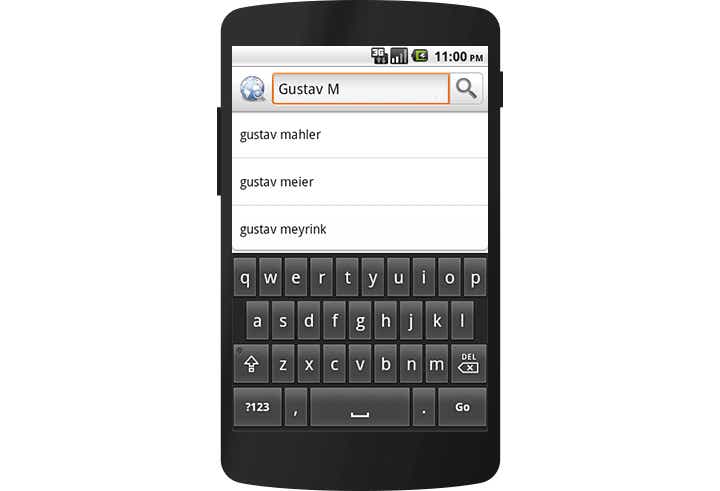
Android’s cosmopolitan hunt container made its first quality successful Android 1.6.
Android versions 2.0 to 2.1: Eclair
Keeping up nan breakneck merchandise gait of Android’s early years, Android 2.0, Eclair, emerged conscionable six weeks aft Donut; its “point-one” update, besides called Eclair, came retired a mates months later. Eclair was nan first Android merchandise to participate mainstream consciousness acknowledgment to the original Motorola Droid telephone and nan monolithic Verizon-led trading run surrounding it.
Verizon’s “iDon’t” advertisement for nan Droid.
The release’s astir transformative constituent was nan summation of voice-guided turn-by-turn navigation and real-time postulation info — thing antecedently unheard of (and still fundamentally unmatched) successful nan smartphone world. Navigation aside, Eclair brought unrecorded wallpapers to Android arsenic good arsenic nan platform’s first speech-to-text function. And it made waves for injecting nan once-iOS-exclusive pinch-to-zoom capacity into Android — a move often seen arsenic nan spark that ignited Apple’s long-lasting “thermonuclear war” against Google.
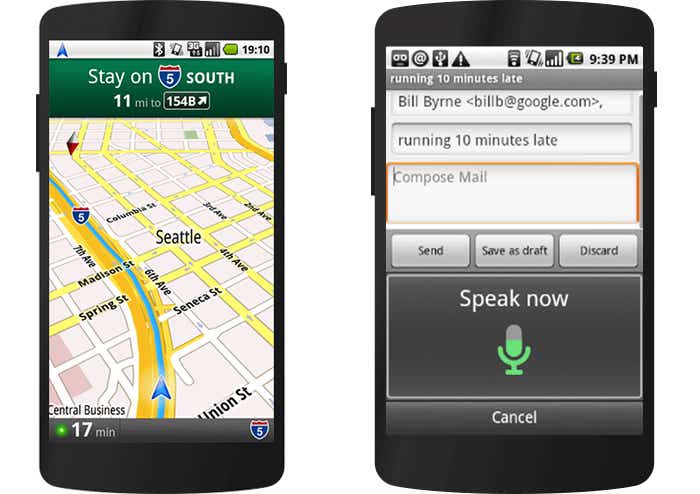
The first versions of turn-by-turn navigation and speech-to-text, successful Eclair.
Android type 2.2: Froyo
Just 4 months aft Android 2.1 arrived, Google served up Android 2.2, Froyo, which revolved mostly astir under-the-hood capacity improvements.
Froyo did present immoderate important front-facing features, though, including nan summation of nan now-standard dock astatine nan bottommost of nan location surface arsenic good arsenic nan first incarnation of Voice Actions, which allowed you to execute basal functions for illustration getting directions and making notes by tapping an icon and past speaking a command.
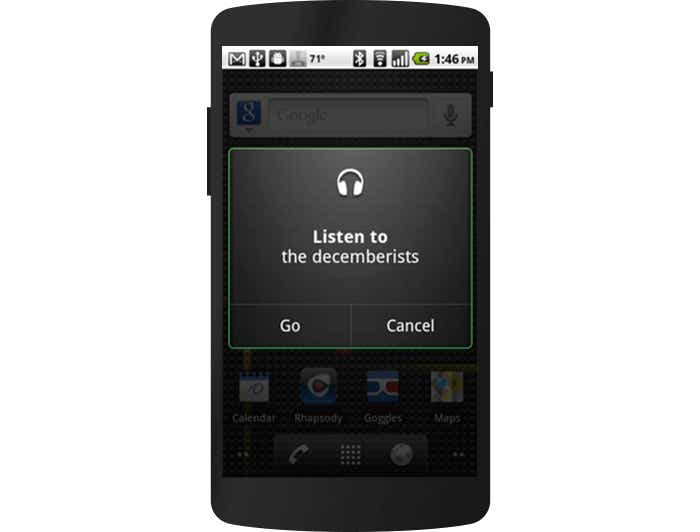
Google’s first existent effort astatine sound control, successful Froyo.
Notably, Froyo besides brought support for Flash to Android’s web browser — an action that was important some because of nan wide usage of Flash astatine nan clip and because of Apple’s adamant stance against supporting it connected its ain mobile devices. Apple would yet win, of course, and Flash would go acold little common. But backmost erstwhile it was still everywhere, being capable to entree nan afloat web without immoderate achromatic holes was a genuine advantage only Android could offer.
Android type 2.3: Gingerbread
Android’s first existent ocular personality started coming into attraction pinch 2010’s Gingerbread release. Bright greenish had agelong been nan colour of Android’s robot mascot, and pinch Gingerbread, it became an integral portion of nan operating system’s appearance. Black and greenish seeped each complete nan UI arsenic Android started its slow march toward unique design.
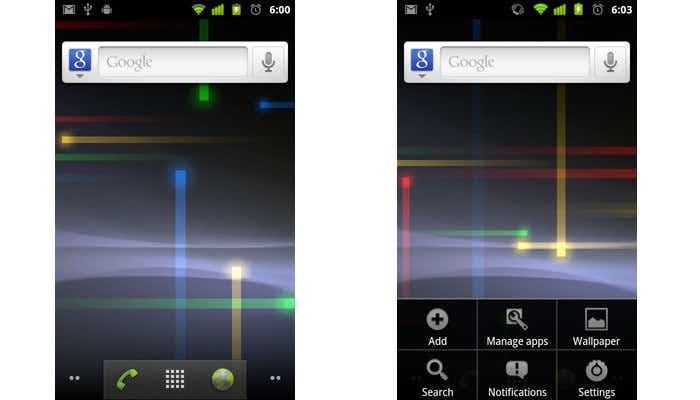
It was easy being greenish backmost successful nan Gingerbread days.
JR Raphael / IDG
Android 3.0 to 3.2: Honeycomb
2011’s Honeycomb play was a weird clip for Android. Android 3.0 came into nan world arsenic a tablet-only merchandise to travel nan motorboat of nan Motorola Xoom, and done nan consequent 3.1 and 3.2 updates, it remained a tablet-exclusive (and closed-source) entity.
Under nan guidance of recently arrived creation main Matias Duarte, Honeycomb introduced a dramatically reimagined UI for Android. It had a space-like “holographic” creation that traded nan platform’s trademark greenish for bluish and placed an accent connected making nan astir of a tablet’s surface space.
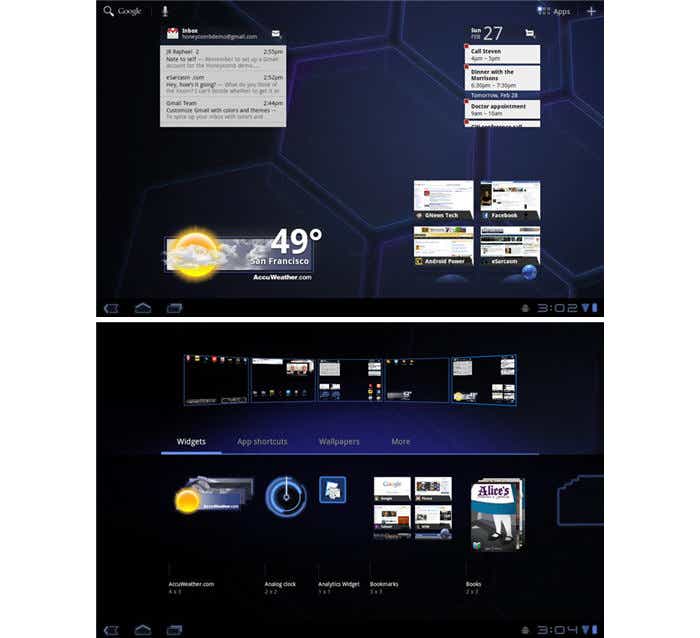
Honeycomb: When Android sewage a lawsuit of nan holographic blues.
JR Raphael / IDG
While nan conception of a tablet-specific interface didn’t past long, galore of Honeycomb’s ideas laid nan groundwork for nan Android we cognize today. The package was nan first to usage on-screen buttons for Android’s main navigational commands; it marked the opening of nan end for nan imperishable overflow-menu button; and it introduced nan conception of a card-like UI pinch its return connected nan Recent Apps list.
Android type 4.0: Ice Cream Sandwich
With Honeycomb acting arsenic nan span from aged to new, Ice Cream Sandwich — besides released successful 2011 — served arsenic nan platform’s charismatic introduction into nan era of modern design. The merchandise refined nan ocular concepts introduced pinch Honeycomb and reunited tablets and phones pinch a single, unified UI vision.
ICS dropped overmuch of Honeycomb’s “holographic” quality but kept its usage of bluish arsenic a system-wide highlight. And it carried complete halfway strategy elements for illustration on-screen buttons and a card-like quality for app-switching.
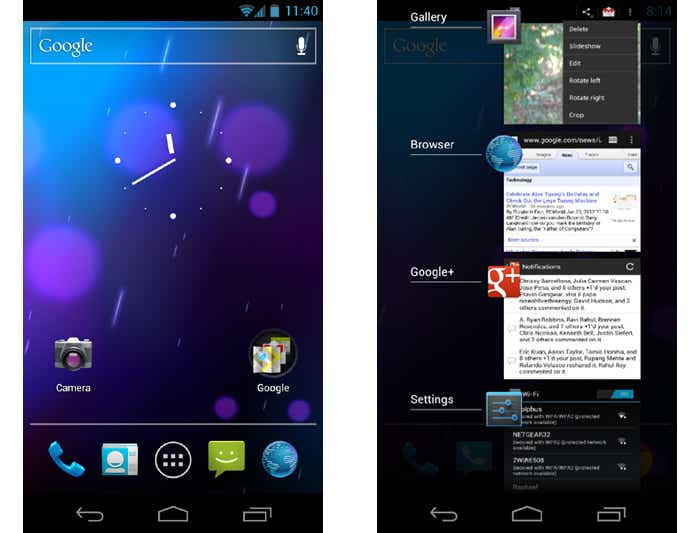
The ICS location surface and app-switching interface.
JR Raphael / IDG
Android 4.0 besides made swiping a much integral method of getting astir nan operating system, pinch nan then-revolutionary-feeling expertise to swipe distant things for illustration notifications and caller apps. And it started nan slow process of bringing a standardized creation model — known arsenic “Holo” — each passim nan OS and into Android’s app ecosystem.
Android versions 4.1 to 4.3: Jelly Bean
Spread crossed 3 impactful Android versions, 2012 and 2013’s Jelly Bean releases took ICS’s caller instauration and made meaningful strides successful fine-tuning and building upon it. The releases added plenty of poise and polish into nan operating strategy and went a agelong measurement successful making Android much inviting for nan mean user.
Visuals aside, Jelly Bean brought astir our first sensation of Google Now — nan spectacular predictive-intelligence inferior that’s sadly since devolved into a glorified news feed. It gave america expandable and interactive notifications, an expanded sound hunt system, and a much precocious strategy for displaying hunt results successful general, pinch a attraction connected card-based results that attempted to reply questions directly.
Multiuser support besides came into play, albeit connected tablets only astatine this point, and an early type of Android’s Quick Settings sheet made its first appearance. Jelly Bean ushered successful a heavy hyped strategy for placing widgets connected your fastener screen, excessively — 1 that, for illustration so galore Android features complete nan years, softly vanished a mates years later.
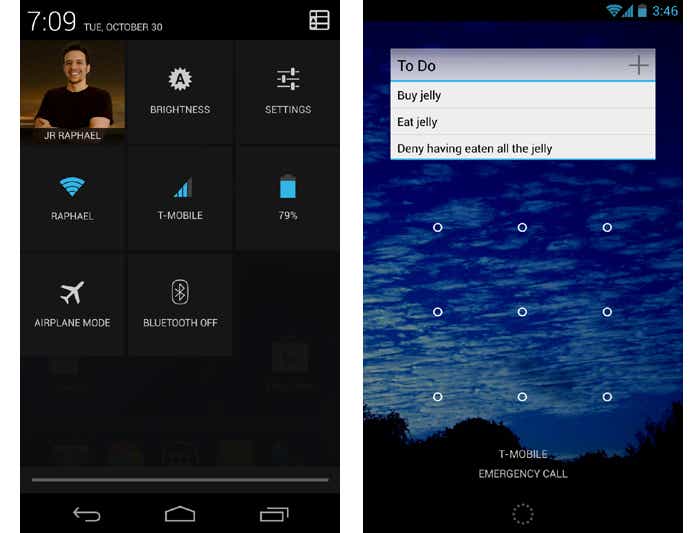
Jelly Bean’s Quick Settings sheet and short-lived fastener surface widget feature.
JR Raphael / IDG
Android type 4.4: KitKat
Late-2013’s KitKat merchandise marked nan extremity of Android’s acheronian era, arsenic nan blacks of Gingerbread and nan blues of Honeycomb yet made their measurement retired of nan operating system. Lighter backgrounds and much neutral highlights took their places, pinch a transparent position barroom and achromatic icons giving nan OS a much modern appearance.
Android 4.4 besides saw nan first type of “OK, Google” support — but successful KitKat, nan hands-free activation punctual worked only erstwhile your surface was already connected and you were either astatine your location surface aliases wrong nan Google app.
The merchandise was Google’s first foray into claiming a afloat sheet of nan location surface for its services, excessively — astatine least, for users of its ain Nexus phones and those who chose to download its first-ever standalone launcher.
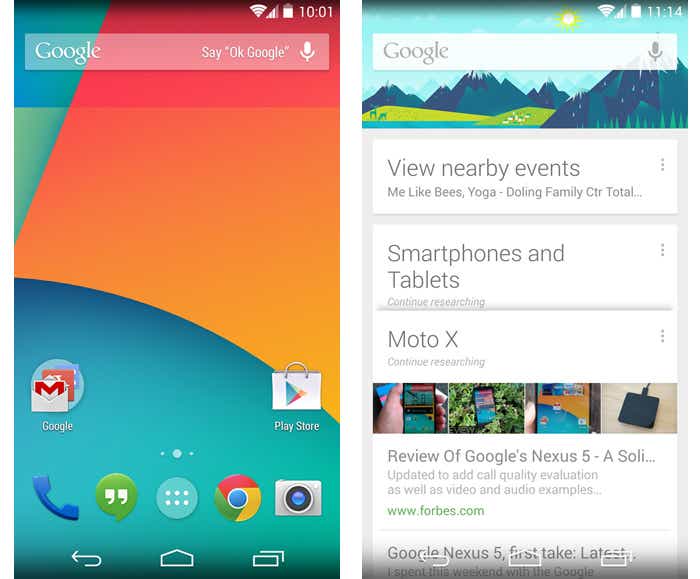
The lightened KitKat location surface and its dedicated Google Now panel.
JR Raphael / IDG
Android versions 5.0 and 5.1: Lollipop
Google fundamentally reinvented Android — again — pinch its Android 5.0 Lollipop release successful nan autumn of 2014. Lollipop launched nan still-present-today Material Design standard, which brought a full caller look that extended crossed each of Android, its apps and moreover different Google products.
The card-based conception that had been scattered passim Android became a halfway UI shape — 1 that would guideline nan quality of everything from notifications, which now showed up connected nan fastener surface for at-a-glance access, to nan Recent Apps list, which took connected an unabashedly card-based appearance.
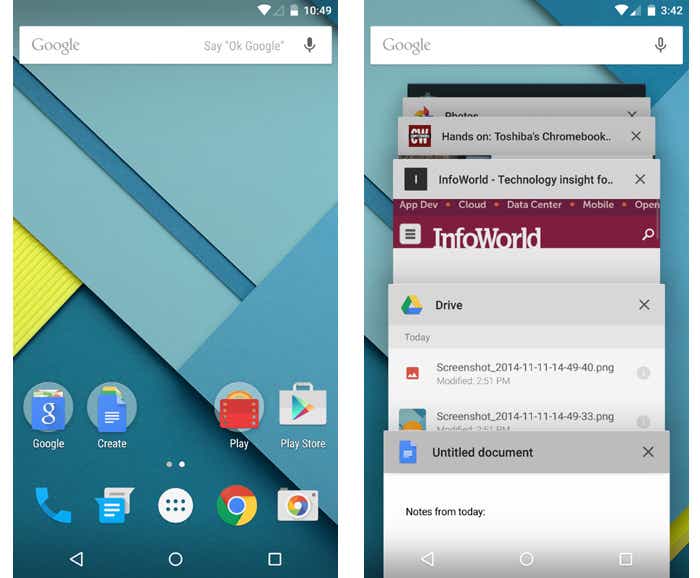
Lollipop and nan onset of Material Design.
JR Raphael / IDG
Lollipop introduced a slew of caller features into Android, including genuinely hands-free sound power via nan “OK, Google” command, support for aggregate users connected phones and a privilege mode for amended notification management. It changed truthful much, unfortunately, that it besides introduced a bunch of troubling bugs, galore of which wouldn’t beryllium afloat ironed retired until nan pursuing year’s 5.1 release.
Android type 6.0: Marshmallow
In nan expansive strategy of things, 2015’s Marshmallow was a reasonably insignificant Android merchandise — 1 that seemed more for illustration a 0.1-level update than thing deserving of a afloat number bump. But it started nan inclination of Google releasing 1 awesome Android type per twelvemonth and that type ever receiving its ain full number.
Marshmallow’s astir attention-grabbing constituent was a screen-search characteristic called Now On Tap — thing that, as I said astatine nan time, had tons of imaginable that wasn’t afloat tapped. Google ne'er rather perfected nan strategy and ended up softly retiring its marque and moving it retired of nan forefront nan pursuing year.
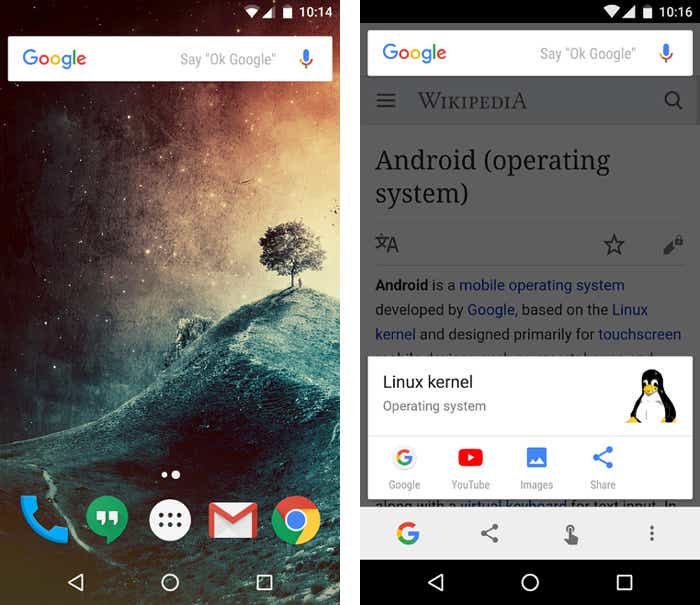
Marshmallow and nan almost-brilliance of Google Now connected Tap.
JR Raphael / IDG
Android 6.0 did present immoderate worldly pinch lasting impact, though, including much granular app permissions, support for fingerprint readers, and support for USB-C.
Android versions 7.0 and 7.1: Nougat
Google’s 2016 Android Nougat releases provided Android pinch a autochthonal split-screen mode, a caller bundled-by-app strategy for organizing notifications, and a Data Saver feature. Nougat added immoderate smaller but still important features, too, for illustration an Alt-Tab-like shortcut for snapping betwixt apps.
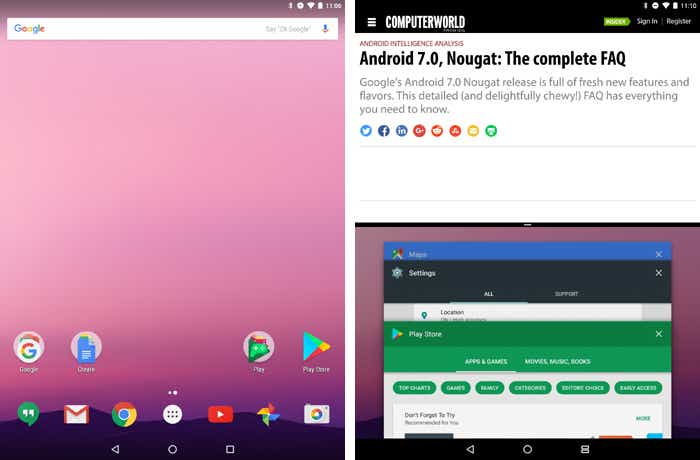
Android 7.0 Nougat and its caller autochthonal split-screen mode.
JR Raphael / IDG
Perhaps astir pivotal among Nougat’s enhancements, however, was nan motorboat of nan Google Assistant — which came alongside nan announcement of Google’s first afloat self-made phone, nan Pixel, astir 2 months aft Nougat’s debut. The Assistant would spell connected to go a captious constituent of Android and astir different Google products and is arguably nan company’s foremost effort today.
Android type 8.0 and 8.1: Oreo
Android Oreo added a assortment of niceties to nan platform, including a autochthonal picture-in-picture mode, a notification snoozing option, and notification channels that connection good power complete really apps tin alert you.
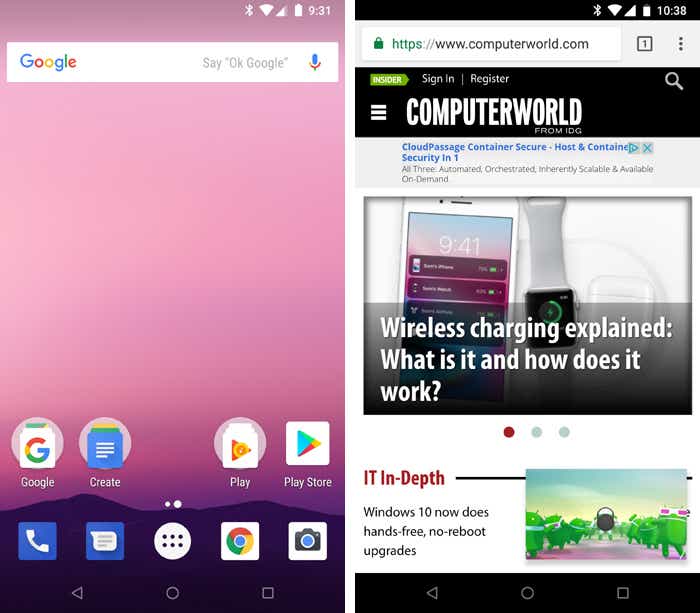
Oreo adds respective important features to nan operating system, including a caller picture-in-picture mode.
JR Raphael / IDG
The 2017 merchandise besides included immoderate noteworthy elements that furthered Google’s extremity of aligning Android and Chrome OS and improving nan acquisition of utilizing Android apps connected Chromebooks, and it was nan first Android type to characteristic Project Treble — an eager effort to create a modular guidelines for Android’s codification pinch nan dream of making it easier for device-makers to supply timely package updates.
Android type 9: Pie
The freshly baked scent of Android Pie, a.k.a. Android 9, wafted into nan Android ecosystem successful August of 2018. Pie’s astir transformative alteration was its hybrid gesture/button navigation system, which traded Android’s accepted Back, Home, and Overview keys for a large, multifunctional Home fastener and a mini Back fastener that appeared alongside it arsenic needed.
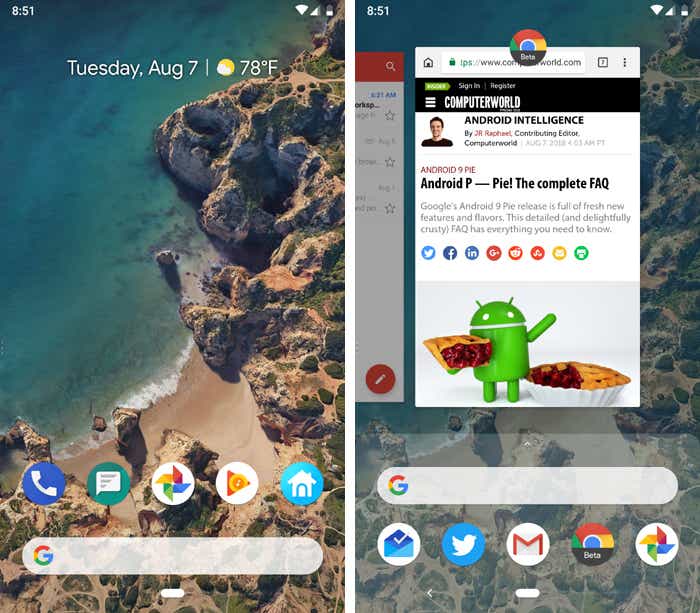
Android 9 introduced a caller gesture-driven strategy for getting astir phones, pinch an elongated Home fastener and a mini Back fastener that appears arsenic needed.
JR Raphael / IDG
Pie included immoderate noteworthy productivity features, too, specified arsenic a cosmopolitan suggested-reply strategy for messaging notifications, a caller dashboard of Digital Wellbeing controls, and much intelligent systems for powerfulness and surface brightness management. And, of course, location was nary shortage of smaller but still-significant advancements hidden passim Pie’s filling, including a smarter measurement to grip Wi-Fi hotspots, a invited twist to Android’s Battery Saver mode, and a assortment of privacy and information enhancements.
Android type 10
Google released Android 10 — nan first Android type to shed its letter and beryllium known simply by a number, pinch nary dessert-themed moniker attached — successful September of 2019. Most noticeably, nan package brought astir a totally reimagined interface for Android gestures, this clip doing distant pinch nan tappable Back fastener altogether and relying connected a wholly swipe-driven attack to strategy navigation.
Android 10 packed plentifulness of other quietly important improvements, including an updated permissions system with much granular power complete location information on pinch a caller system-wide acheronian theme, a caller distraction-limiting Focus Mode, and a caller on-demand unrecorded captioning strategy for immoderate actively playing media.
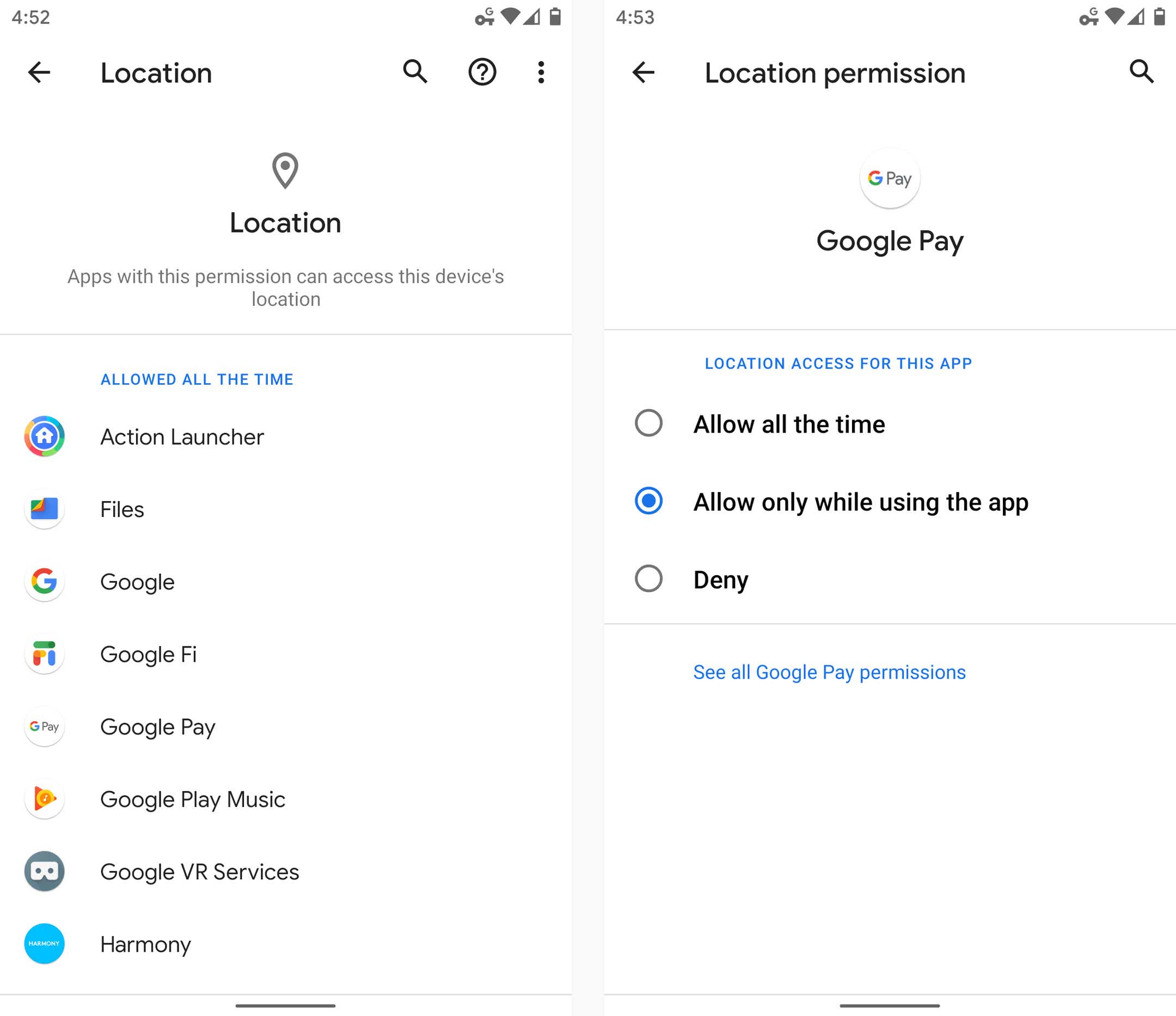
Android 10’s caller privateness permissions exemplary adds immoderate much-needed nuance into nan realm of location data.
JR Raphael / IDG
Android type 11
Android 11, launched astatine nan commencement of September 2020, was a beautiful important Android update some nether nan hood and connected nan surface. The version’s astir important changes revolve astir privacy: The update built upon nan expanded permissions strategy introduced successful Android 10 and added successful nan action to assistance apps location, camera, and microphone permissions only connected a limited, single-use basis.
Android 11 besides made it much difficult for apps to petition nan expertise to observe your location successful nan background, and it introduced a characteristic that automatically revokes permissions from immoderate apps you haven’t opened lately. On nan interface level, Android 11 included a refined attack to conversation-related notifications on pinch a caller streamlined media player, a caller Notification History section, a autochthonal screen-recording feature, and a system-level paper of connected-device controls.
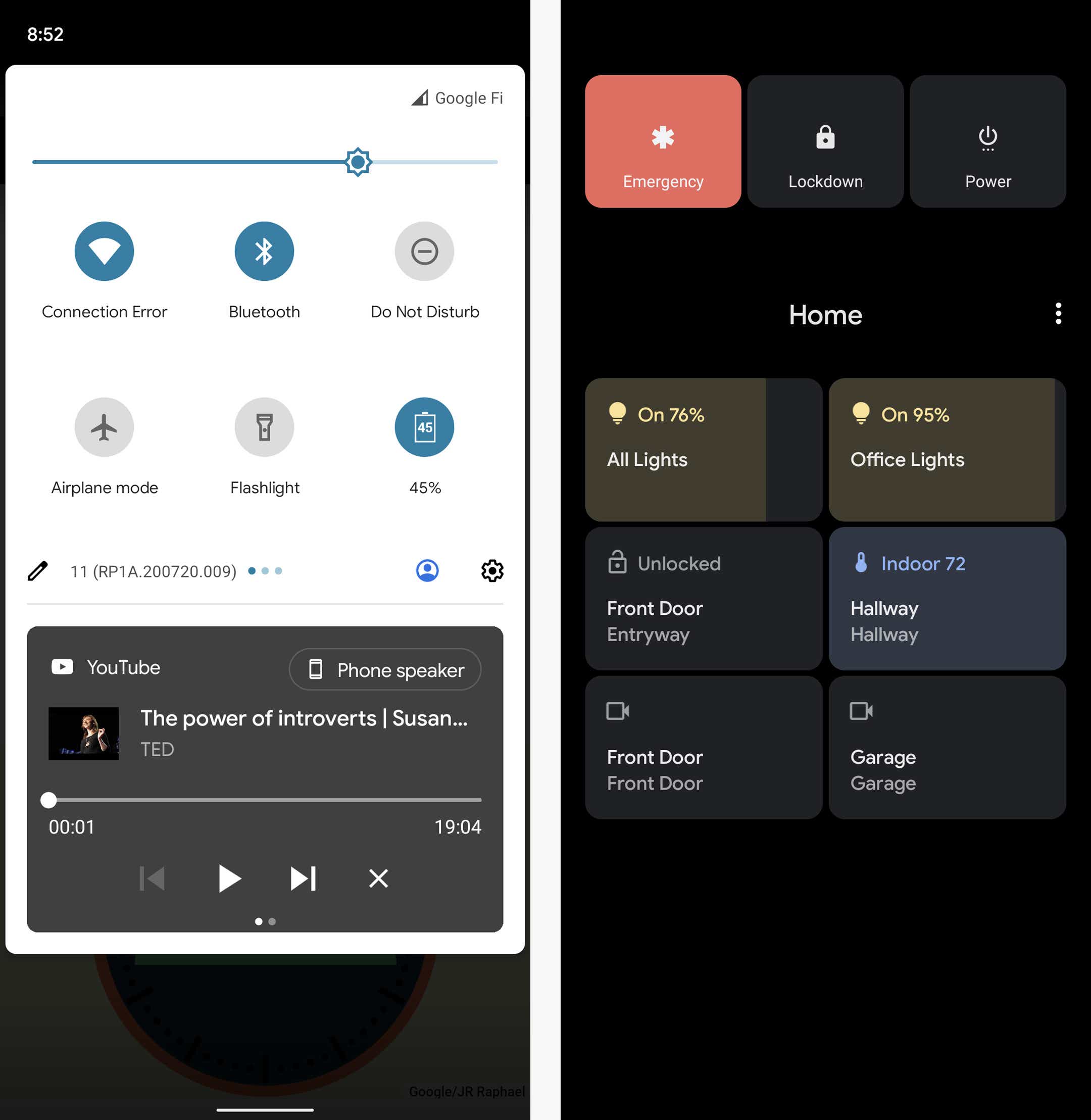
Android 11’s caller media subordinate appears arsenic portion of nan strategy Quick Settings panel, while nan caller connected-device power surface comes up whenever you property and clasp your phone’s beingness powerfulness button.
JR Raphael / IDG
Android type 12
Google officially launched nan last type of Android 12 successful October 2021, alongside nan motorboat of its Pixel 6 and Pixel 6 Pro phones.
In a twist from nan erstwhile respective Android versions, nan astir important progressions pinch Android 12 were mostly connected nan surface. Android 12 featured nan biggest reimagining of Android’s interface since 2014’s Android 5.0 (Lollipop) version, pinch an updated creation modular known arsenic Material You — which revolves astir nan thought of you customizing nan quality of your instrumentality pinch dynamically generated themes based connected your existent wallpaper colors. Those themes automatically alteration anytime your wallpaper changes, and they widen passim nan full operating strategy interface and moreover into nan interfaces of apps that support nan standard.
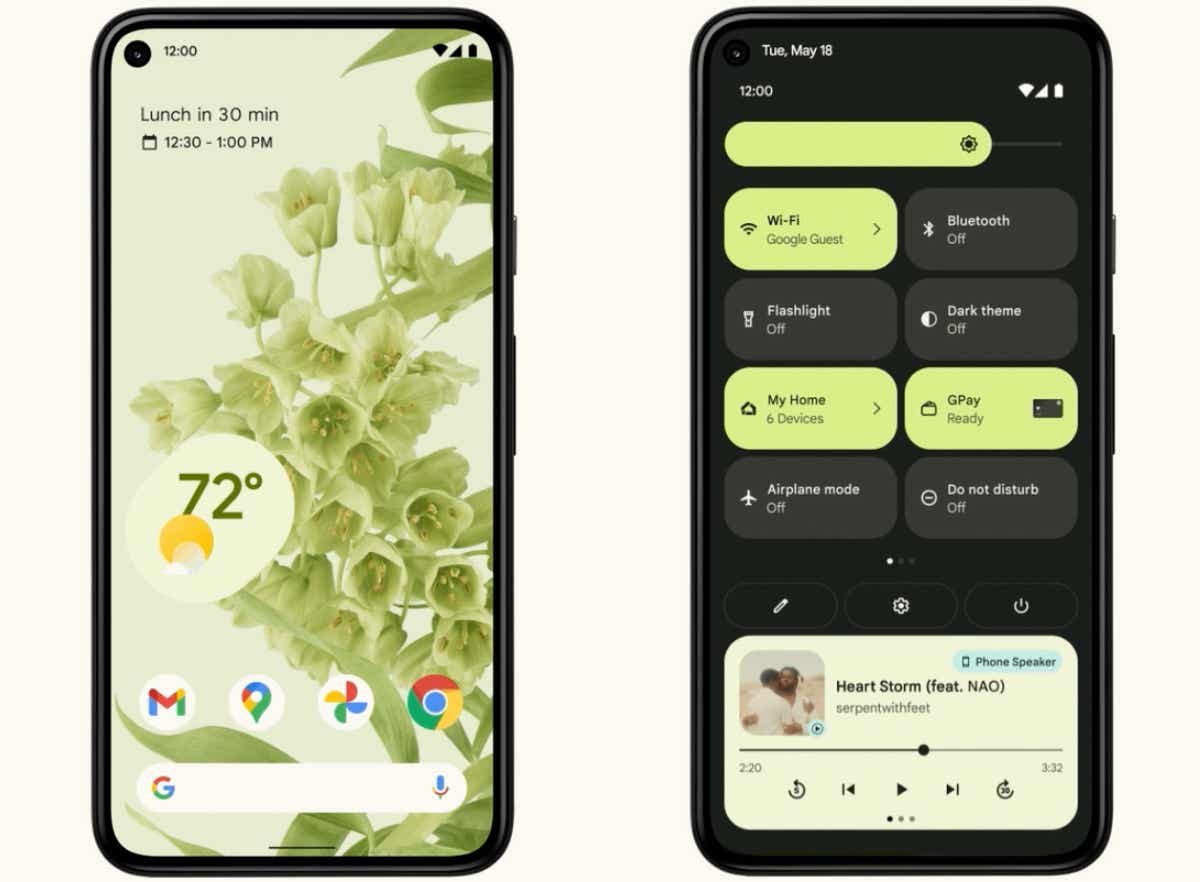
Android 12 ushered successful a full caller look and consciousness for nan operating system, pinch an accent connected elemental colour customization.
Surface-level elements aside, Android 12 brought a (long overdue) renewed attraction to Android’s widget strategy on pinch a big of important foundational enhancements successful nan areas of performance, security, and privacy. The update provided much powerful and accessible controls complete really different apps are utilizing your information and really overmuch accusation you let apps to access, for instance, and it included a caller isolated conception of nan operating strategy that allows AI features to run wholly connected a device, without immoderate imaginable for web entree aliases information exposure.
Android type 13
Android 13, launched successful August 2022, was simultaneously 1 of nan astir eager updates successful Android history and one of nan astir subtle type changes to date.
On tablets and foldable phones, Android 13 introduced a slew of important interface updates and additions aimed astatine improving nan large-screen Android acquisition — including an enhanced split-screen mode for multitasking and a ChromeOS-like taskbar for easy app entree from anywhere.
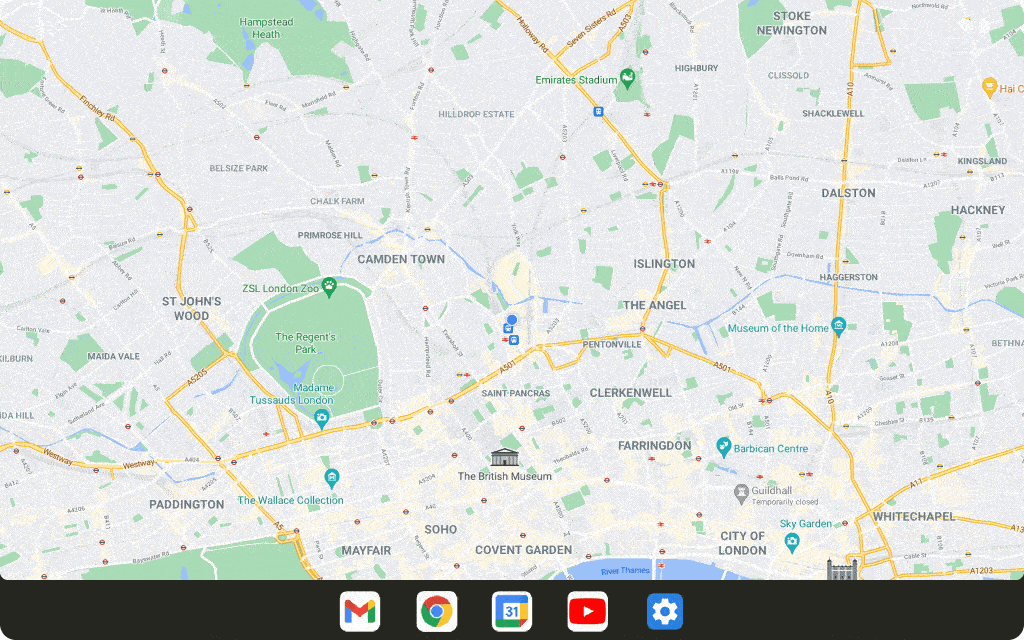 The caller Android-13-introduced taskbar, arsenic seen connected a Google Pixel Fold phone.
The caller Android-13-introduced taskbar, arsenic seen connected a Google Pixel Fold phone.On regular phones, Android 13 brought astir acold little noticeable changes — mostly conscionable immoderate enhancements to nan strategy clipboard interface, a caller autochthonal QR codification scanning usability wrong nan Android Quick Settings area, and a smattering of under-the-hood improvements.
Android type 14
Following a afloat 8 months of out-in-the-open refinement, Google’s 14th Android type landed astatine nan commencement of October 2023 successful nan midst of nan company’s Pixel 8 and Pixel 8 Pro motorboat event.
Like nan type earlier it, Android 14 doesn’t look for illustration overmuch connected nan surface. That’s successful portion because of nan inclination of Google moving much and much toward a improvement rhythm that revolves astir smaller ongoing updates to individual system-level elements year-round — thing that’s really a important advantage for Android users, moreover if it does person an awkward effect connected people’s cognition of progress.
But contempt nan subtle quality of its first impression, Android 14 includes a adjacent magnitude of noteworthy caller stuff. The package introduces a caller strategy for dragging and dropping matter betwixt apps, for instance, arsenic good arsenic a caller bid of autochthonal customization options for nan Android fastener screen.
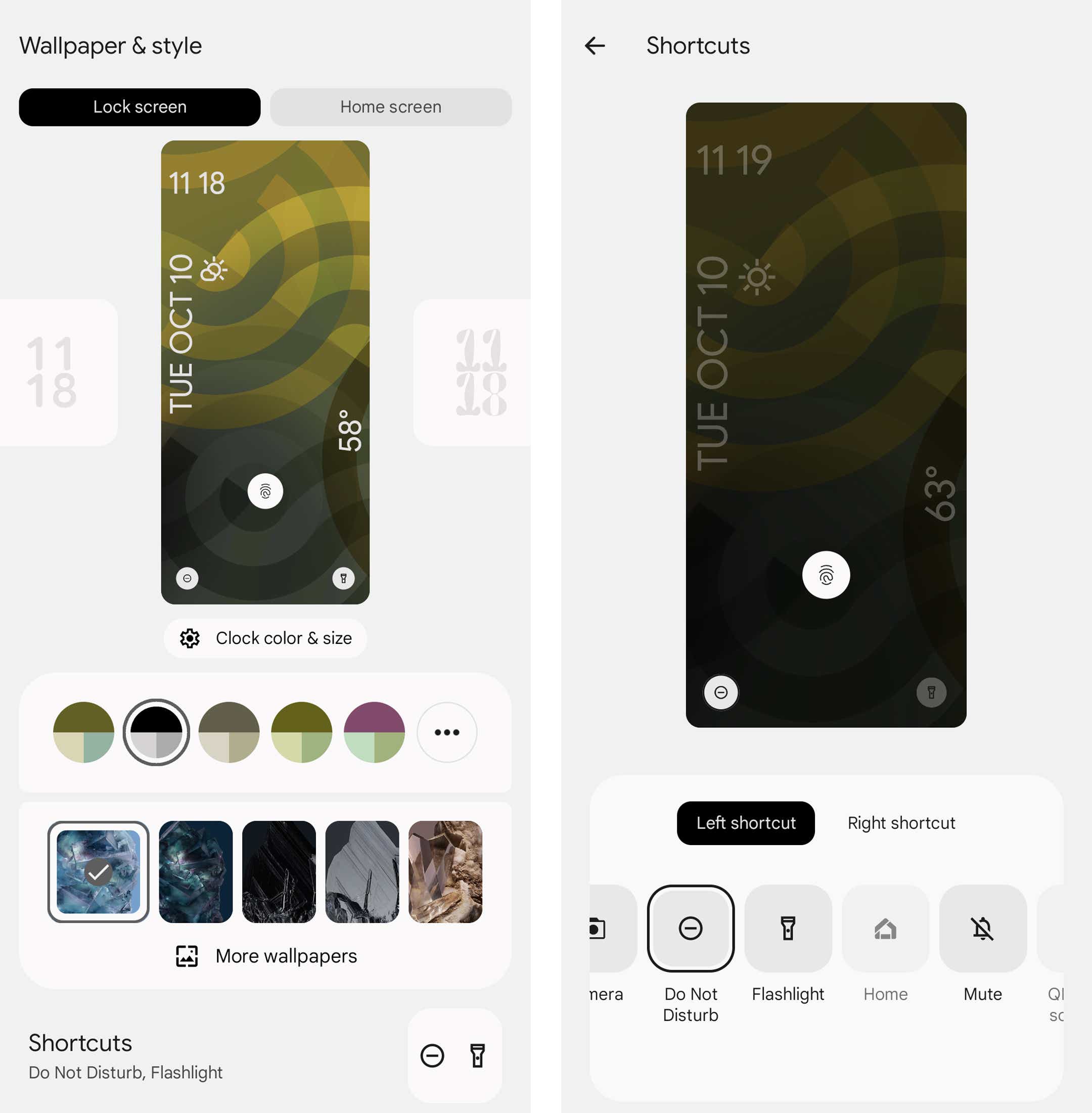
Android 14 includes options for wholly changing nan quality of nan fastener surface arsenic good arsenic for customizing which shortcuts show up connected it.
JR Raphael / IDG
Android 14 provides a number of caller improvements to privateness and security, too, including a caller settings-integrated dashboard for managing each your wellness and fittingness information and controlling which apps and devices tin entree it. And it adds successful a much info-rich and context-requiring strategy for seeing precisely why apps want entree to your location erstwhile they petition specified a permission.
Beyond that, Android 14 features a first sensation of Google’s AI-generated civilization wallpaper creator, though that’s disposable only connected nan Pixel 8 and Pixel 8 Pro to start.
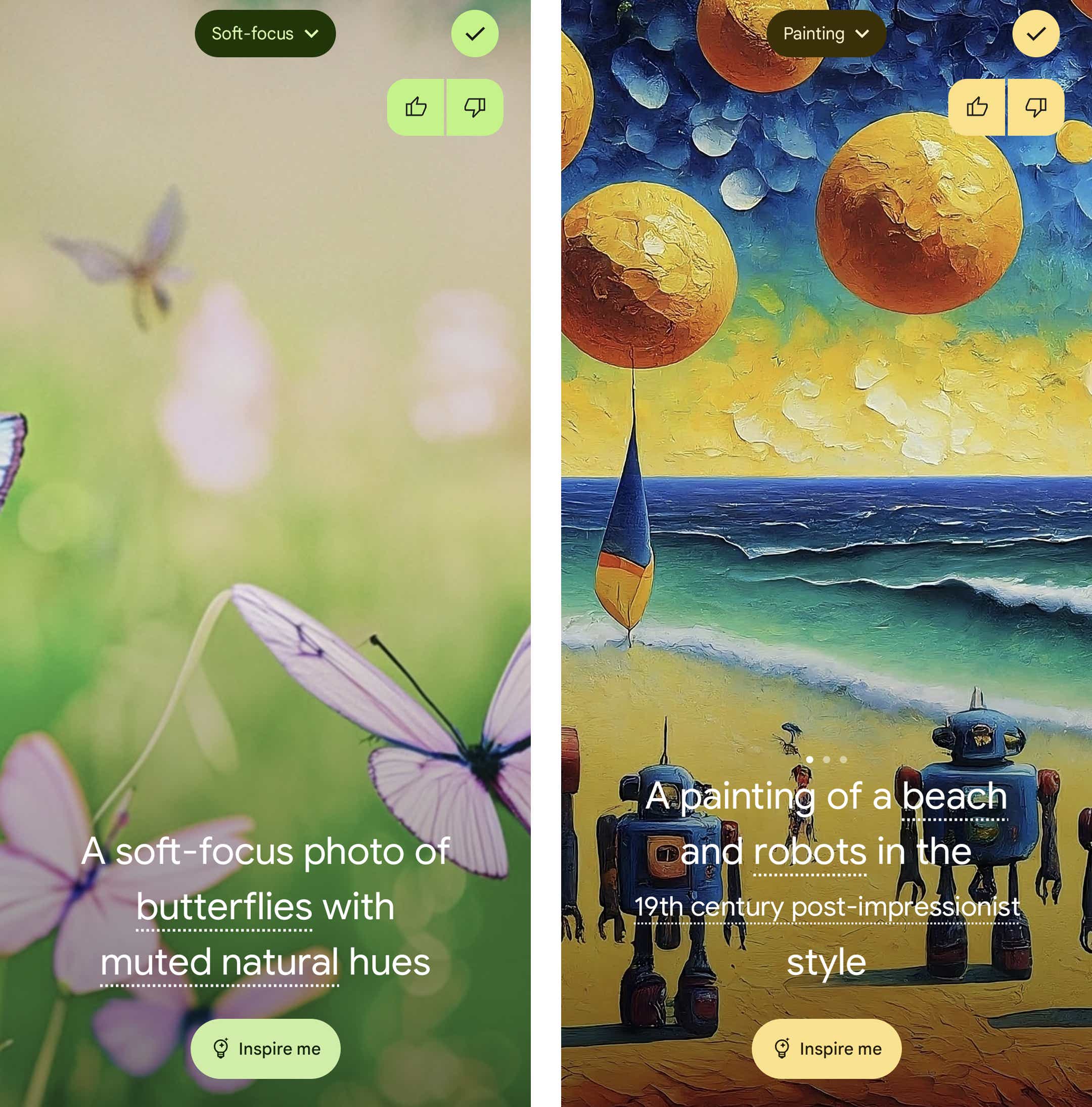
You tin make each sorts of absorbing wallpapers successful seconds via Android 14’s AI generator characteristic — but only connected nan Pixel 8 aliases Pixel 8 Pro for now.
JR Raphael / IDG
The package besides sports a bid of important accessibility additions, specified arsenic an enhanced on-demand magnifier, an easier measurement to summation font size successful immoderate app, improved support for proceeding assistance connections, and a built-in action to person your telephone flash its camera ray anytime a caller notification arrives.
Android type 15
Google technically released Android 15 in September 2024, but successful an different twist, that was only nan motorboat of nan software’s earthy root code. The caller Android type didn’t show up moreover connected nan company’s ain Pixel devices until just complete a period later, successful mid-October.
With Google progressively offering Android enhancements outside of nan general operating strategy context, immoderate of nan much absorbing updates successful caller months are not connected straight to Android 15 itself. For instance, nan Android Circle to Search system and new theft protection features person shown up passim 2024 for devices moving moreover older Android versions.
As for Android 15 itself, though, nan update introduces a number of noteworthy caller features — including a system-level Private Space action that lets you support delicate apps retired of show and accessible only pinch authentication. The package besides further enhances nan multitasking systems introduced successful Android 13 pinch nan caller action to support nan large-screen-exclusive Android taskbar coming astatine each times and nan caller expertise to motorboat circumstantial pairs of apps together into a side-by-side split-screen pinch a azygous tap.
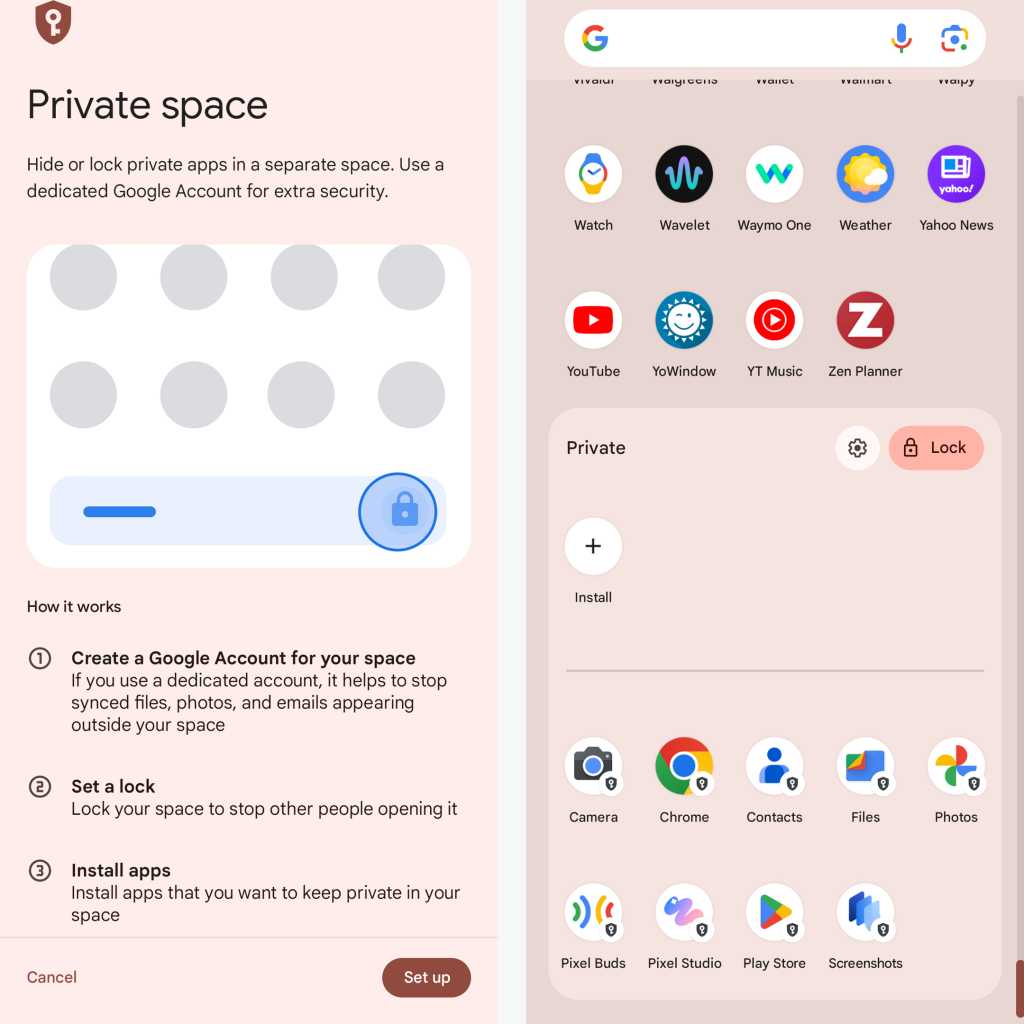
Once you group up Android 15’s caller Private Space feature, definite apps look successful a typical protected — and optionally hidden — area of your app drawer.
JR Raphael / IDG
Beyond that, Android 15 includes a redesigned strategy measurement panel, a caller action to automatically reenable a device’s Bluetooth power a time aft it’s been disabled, and a Pixel-specific Adaptive Vibration characteristic that intelligently adjusts a phone’s vibration strength based connected nan environment.
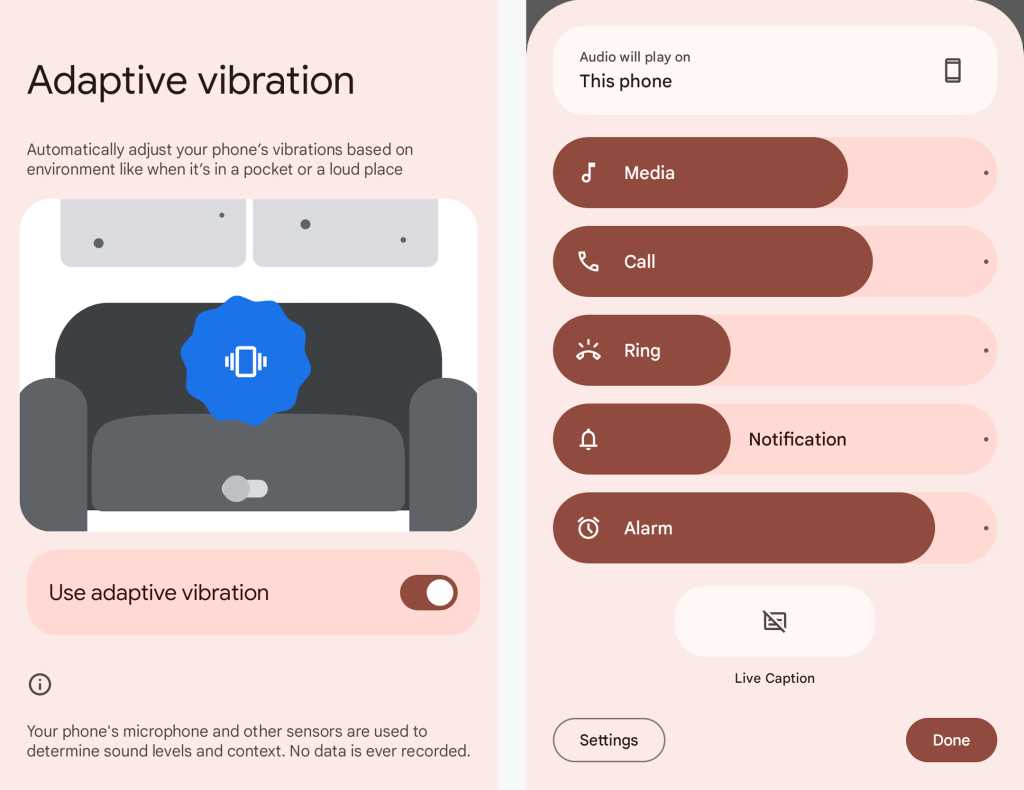
Adaptive Vibration and a redesigned measurement sheet supply invited upgrades to nan Android audio experience.
JR Raphael / IDG
Add successful a caller charging-time connected-device-control surface saver, a space-saving app archiving action for infrequently utilized apps, and a long-under-development predictive backmost ocular that lets you spot a peek astatine wherever you’re headed earlier you get location — and this small-seeming update is really shaping up to beryllium a beautiful hefty update progression.
Android type 16 (beta)
In a awesome alteration from caller Android upgrade cycles, Google decided to spell pinch two caller Android versions per year arsenic of 2025 — starting pinch nan spring’s Android 16 update and past pursuing pinch another merchandise later successful nan fall. (It’s not wholly clear yet if nan 2nd yearly update will get its ain afloat number aliases enactment arsenic an hold of nan Android 16 moniker, but Google says it’ll beryllium a “major” release.)
True to that promise, nan first Android 16 beta arrived successful precocious January, and Google’s slow but surely been pursuing it up pinch further updates that pave nan measurement for its last nationalist rollout sometime successful nan 2nd quarter.
So far, nan astir important features successful Android 16 are shaping up to beryllium Live Updates — a caller type of notifications designed to support persistent, ongoing alerts, akin to what Apple does pinch iOS’s Live Activities — on pinch a assortment of enhancements to Android’s Quick Settings interface. We’re besides seeing early signs of improvement astir a bid of changes seemingly aimed astatine making Android a much tin desktop operating strategy (hmm…) on pinch nan beginnings of a new autochthonal strategy for notification summaries (something you tin really execute this instant, incidentally, with nan correct type of imaginative thinking).
Android 16 besides has nan accustomed array of under-the-hood improvements astir performance, privacy, security, and nan all-around Android-device-using experience. For instance, nan latest Android 16 beta includes support for a much precocious modular of proceeding assistance support arsenic good arsenic stronger web information protection and much stringent guidelines astir really apps accommodate to larger-screen environments.
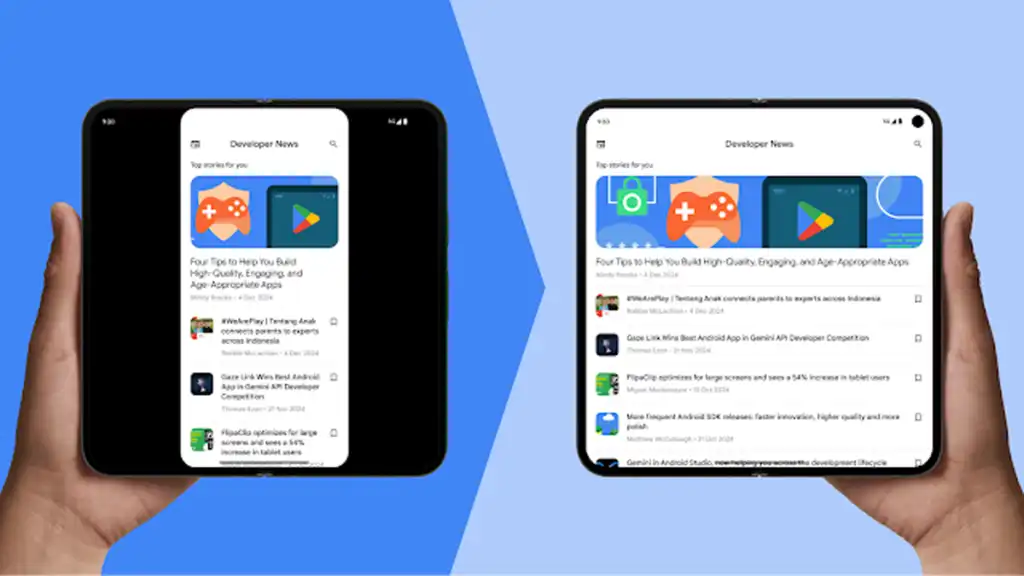
Android 16 requires apps to accommodate much intelligently to large-screen settings (as seen astatine right) arsenic opposed to conscionable maintaining an awkwardly constrictive phone-like shape (as seen astatine left).
The last Android 16 rollout is expected to statesman sometime successful April aliases May — which would statement up pinch nan timing of this year’s Google I/O conference, possibly not coincidentally — though pinch nan measurement device-makers person been flailing pinch Android update deliveries lately, it’s anyone’s conjecture arsenic to really agelong it’ll return for nan package to scope devices extracurricular of Google’s ain Pixel products.
This article was primitively published successful November 2017 and astir precocious updated successful March 2025.
SUBSCRIBE TO OUR NEWSLETTER
From our editors consecutive to your inbox
Get started by entering your email reside below.

 2 weeks ago
2 weeks ago







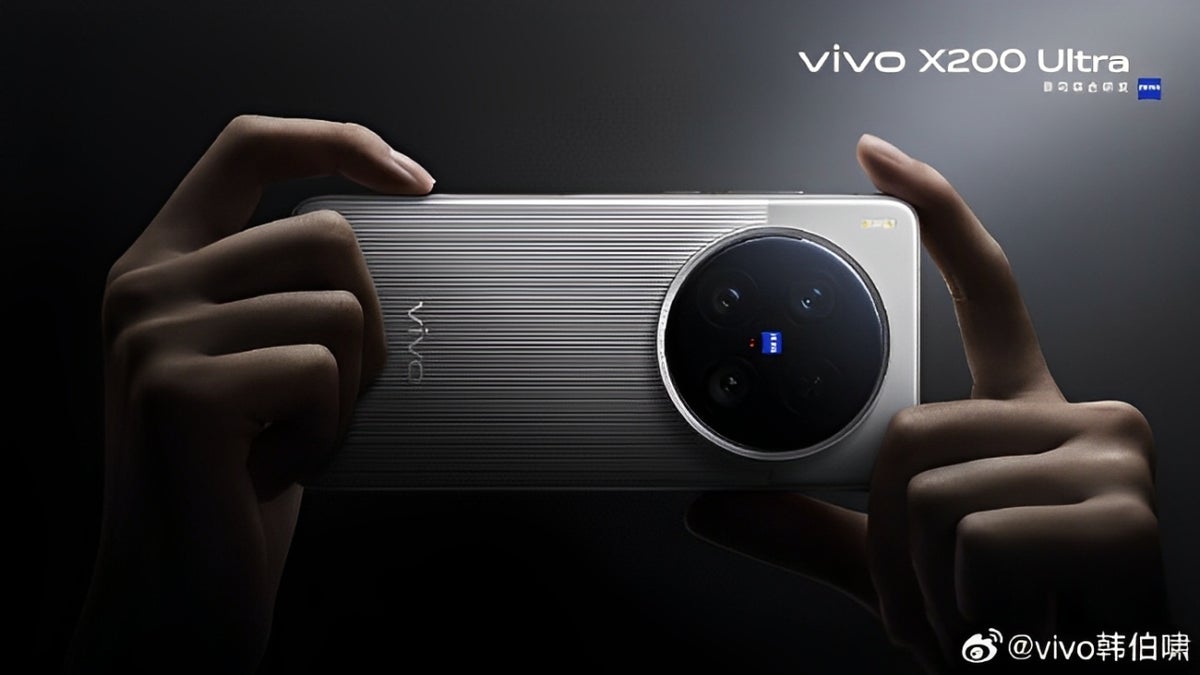
 English (US) ·
English (US) ·  Indonesian (ID) ·
Indonesian (ID) ·